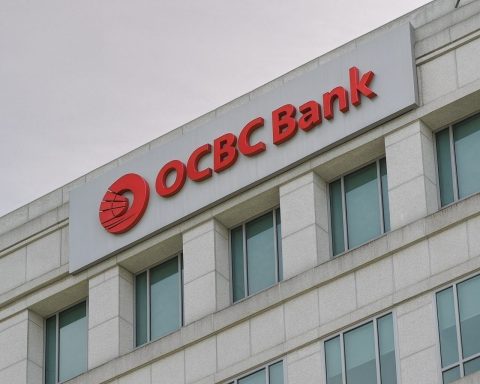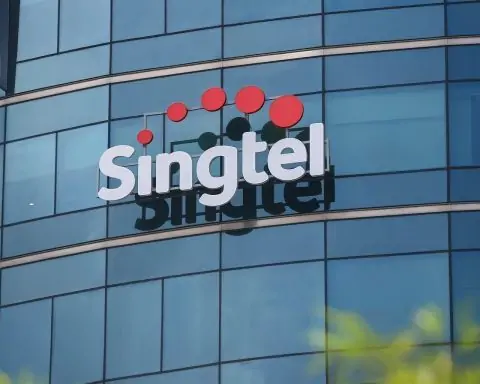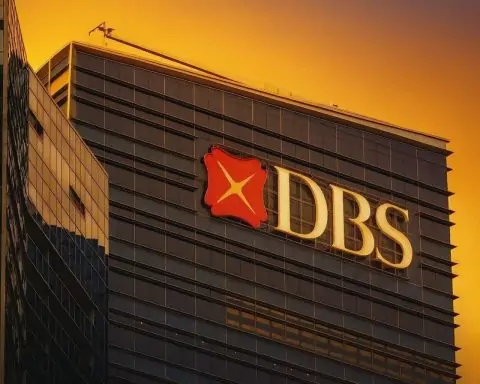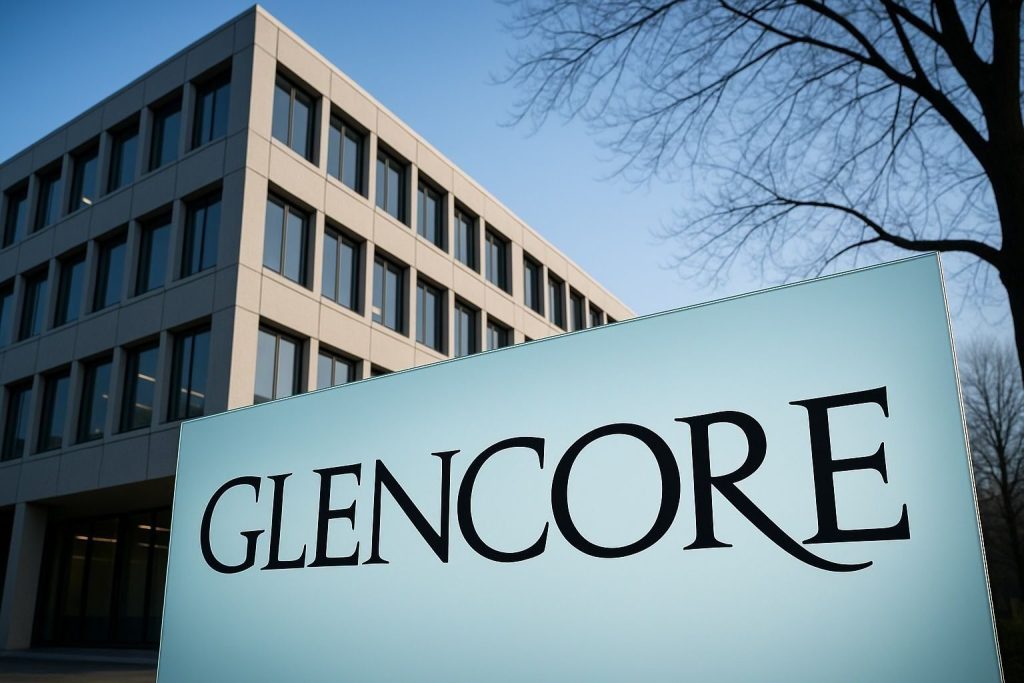Shell Plc (LON: SHEL, NYSE: SHEL) starts the week with a slightly softer share price but a packed news agenda, spanning analyst calls, aggressive buybacks, awards for UK energy security, Asian downstream negotiations and fresh milestones in low‑carbon power and e‑mobility.
Below is a roundup and analysis of the most relevant Shell news and context for 24 November 2025.
Shell share price today and fresh analyst call from Kepler Cheuvreux
On the London Stock Exchange, Shell’s ordinary shares traded around 2,765p late morning on 24 November 2025, down roughly 0.7% on the day. Trustnet data show an open at 2,777p, an intraday high of 2,784p and a low of 2,760.5p, on volume of about 736,000 shares, leaving the stock modestly below recent highs. [1]
In parallel, Kepler Cheuvreux published a sector note flagging Shell as one of its two “Most Preferred” European energy majors, alongside TotalEnergies, even as it warned about an “inevitable oil glut” and downside risk to Brent crude into 2026. Despite calling Shell “Most Preferred”, the brokerage keeps the stock at a “hold” rating:
- The firm argues that European oil majors, including Shell, are already “fairly valued” on a long‑term $60/bbl Brent price deck.
- On a more bearish $50/bbl tactical scenario, Kepler calculates a sum‑of‑parts value of about €30.4 per share for Shell, versus a target price of €30.5 – implying only modest downside from current levels.
- Crucially for income investors, Kepler highlights Shell’s 2025 dividend yield estimate at around 3.9%, describing the payout as “safe” despite sector headwinds. [2]
In other words: the brokerage sees Shell as one of the best houses in a tough neighbourhood – solid balance sheet and dependable cash returns, but limited capital‑gains upside if oil does indeed slide towards $50/bbl.
Capital returns: multi‑billion share buybacks and a major dollar bond exchange
Q3 2025 results underpin shareholder returns
Shell’s current capital‑return story hinges on the strong Q3 2025 numbers released at the end of October:
- Adjusted earnings: $5.4 billion, beating analyst expectations of about $5.1 billion.
- Cash flow from operations (CFFO): $12.2 billion for the quarter. [3]
- The company announced yet another $3.5 billion share buyback to be completed by the Q4 2025 results, marking the 16th consecutive quarter of at least $3 billion in buybacks and keeping total shareholder distributions at about 48% of CFFO, within its long‑stated 40–50% target range. [4]
Operationally, Q3 was driven by record deepwater production in Brazil and 20‑year highs in the Gulf of Mexico, alongside strong contributions from LNG trading and marketing. [5]
November 2025: buyback machine still running hot
Those headline promises are being backed up in the tape. Regulatory news collated by StockTitan shows Shell continuing to retire stock aggressively throughout November:
- On 21 November 2025, Shell repurchased about 1.50 million shares for cancellation, split roughly equally between London (VWAP ~£27.78) and Amsterdam (VWAP ~€31.66). [6]
- On 18 November 2025, the company bought 1.48 million shares, with London trades averaging about £28.16 and Amsterdam around €32.07, again for cancellation under the existing programme. [7]
- Similar 1.4–1.5 million‑share blocks were retired on 14, 13, 11, 7 and 6 November, all under the buy‑back programme launched on 30 October 2025 and managed independently by Merrill Lynch International through to 30 January 2026. [8]
For investors, the message is clear: even as the share price eases today, Shell is consistently shrinking its equity base, reinforcing earnings per share and supporting total returns.
Large US‑dollar bond exchange to optimise capital structure
Alongside equity buybacks, Shell is also restructuring its debt.
On 3 November 2025, the company launched “any and all” exchange offers for six series of outstanding USD notes(the “Old Notes”) issued by Shell International Finance B.V. and BG Energy Capital plc, to be swapped into new notes issued by Shell Finance US Inc., a Shell subsidiary fully guaranteed by Shell Plc. [9]
Key points:
- The exchange applies to multiple tranches maturing between 2028 and 2051, with coupons ranging from 3.0% to 6.375%. [10]
- The intent is to migrate existing debt into a US financing vehicle, better aligning Shell’s indebtedness with its US business and simplifying the group’s capital structure. [11]
On 18 November, Shell reported early participation results, confirming that by the early participation deadline of 17 November 2025, holders had tendered around $6.22 billion in aggregate principal of Old Notes across the six series. The company then extended the early participation premium (previously reserved for early tenders) to all eligible holders who participate before the final expiration at 5:00 p.m. New York time on 3 December 2025. [12]
That premium effectively gives all participants $1,000 of new notes plus a $1 cash component per $1,000 of Old Notes, rather than a lower base of $970 in new notes without the premium, encouraging broad take‑up. [13]
Taken together, the buybacks and bond exchanges show a management team still laser‑focused on balance‑sheet efficiency and cash returns even as the macro environment softens.
Strategy and transition: LNG strength, portfolio discipline and green power for hydrogen
Shell’s Q3 results and recent project updates reinforce its strategy of prioritising high‑return hydrocarbons and advantaged energy transition assets.
- In Q3, Shell highlighted record deepwater output from Brazil and the Gulf of Mexico, and a strong quarter in Integrated Gas, boosted by the ramp‑up of LNG Canada, which delivered its first cargoes earlier this year. [14]
- Management reiterated guidance for annual capital expenditure of $20–22 billion, with continued emphasis on LNG, deepwater and selective low‑carbon projects. [15]
Recent headlines underscore that “selective” part:
- Shell has withdrawn from the MarramWind and CampionWind floating offshore wind projects in Scotlandfollowing a strategic review, ending its direct role in those ScotWind leases. The company framed the move as portfolio high‑grading rather than a retreat from renewables overall. [16]
- On 20 November 2025, Shell announced that it has secured green power for its 100‑MW Refhyne II hydrogen electrolyser in Germany, via an offtake agreement for about 75% of the output from a 230‑MW solar farm. That deal will provide renewable electricity to the proton‑exchange membrane (PEM) electrolyser, advancing Shell’s low‑carbon hydrogen ambitions in Europe. [17]
These moves illustrate Shell’s shift from “build everything” to “pick the most profitable decarbonisation bets”: big in LNG and trading, selective in offshore wind, and opportunistic in hydrogen and solar‑linked power.
Powering Big Tech: Shell as Google’s 24/7 clean‑energy manager in the UK
Although announced in September, Shell’s partnership with Google remains one of the most strategically important transition stories shaping sentiment today.
As Google opened its new Waltham Cross AI‑ready data centre in the UK, it named Shell Energy Europe as its “24/7 Carbon‑Free Energy Manager” for the country. [18]
Under the agreement:
- Shell manages Google’s UK power portfolio, using its trading desk and battery energy storage systems (BESS)to match data‑centre demand with renewable generation on an hour‑by‑hour basis, rather than just buying annual green certificates. [19]
- Shell will handle the offtake from Google’s long‑term power purchase agreement (PPA) with ENGIE for the Moray West offshore wind project, plus other contracts, and dynamically balance supply and demand via BESS. [20]
Google expects its UK operations to run at or near 95% carbon‑free energy by 2026, with Shell’s energy‑management role helping to close the remaining gap and support grid stability. [21]
For Shell, deals like this strengthen the “energy solutions and trading” narrative: earning fees on expertise and flexibility, not just molecules.
Recognition in the UK: Shell U.K. wins OEUK energy security award
In the UK North Sea, Shell’s legacy as a cornerstone of supply has been recognised again.
At the Offshore Energies UK (OEUK) Awards 2025 in Aberdeen, industry body OEUK named Shell U.K. Limited as the winner of the “Outstanding Contribution to Energy Security” category. [22]
The awards, held on 20 November 2025 and reported today, celebrated companies and individuals across the offshore sector, from apprentices to veteran engineers. OEUK’s leadership highlighted how industry players are simultaneously:
- Maintaining oil and gas output the UK still depends on, and
- Helping deliver the shift toward carbon capture, hydrogen and offshore wind. [23]
The award matters for Shell’s social licence: it reinforces the company’s narrative that it is supporting both security and the transition, even as it faces scrutiny over emissions and project choices.
Asia downstream: Indonesian fuel negotiations and Malaysian digital upgrades
Several 24 November 2025 stories highlight Shell’s still‑important downstream and retail footprint in Asia.
Indonesia: fuel‑supply talks in the spotlight
The Jakarta Post reports that fuel retailer Vivo has secured a supply deal with state‑owned Pertamina for around 100,000 barrels of imported RON‑92 base fuel, while separate negotiations involving Shell remain unresolved. [24]
A second Indonesian outlet, MetroTV News, notes that negotiations between Shell and Pertamina are in their final stages, raising hopes that fuel stock levels could normalise soon after recent tightness. [25]
Details remain limited in publicly accessible snippets, but taken together they suggest Shell is an important counterpart in talks about fuel supply and possibly retail network restructuring in Indonesia – a market where regulators and consumers are highly sensitive to pump prices and availability.
Malaysia: consumer‑facing innovation and brand building
In Malaysia, Shell is on the front foot with both digital services and brand marketing:
- Tech site SoyaCincau reports that the Shell App now supports BUDI95, a government fuel subsidy/benefit mechanism, allowing eligible motorists to activate and manage their BUDI95 entitlements directly inside Shell’s mobile app. [26]
- At the same time, automotive outlet CarSifu covers Shell Malaysia’s celebration of 75 years of collaboration with Scuderia Ferrari and the launch of a refreshed Shell Helix engine‑oil portfolio, aimed at modern engines and local driving conditions. [27]
These consumer‑facing developments may be small in financial terms, but they help Shell defend market share and pricing power in key retail markets while improving data capture through its app ecosystem.
E‑mobility infrastructure: Shell group subsidiary powers e‑buses at Munich Airport
In Europe, Shell’s role in electric‑mobility infrastructure also made headlines today.
SBRS GmbH, part of the Shell group, has completed infrastructure for 37 zero‑emission buses at Munich Airport, installing 50 charging stations rated at 120 kW each, with capacity to expand the fleet to 72 buses. [28]
According to SBRS, the installation and commissioning were carried out in the middle of ongoing airport operations, underscoring Shell’s capability to execute complex, high‑reliability charging projects at scale. [29]
This fits neatly with Shell’s wider ambitions in EV charging and commercial fleet decarbonisation, another recurring theme in investor presentations.
How today’s developments fit the investment story
Putting the 24 November 2025 news flow together, a few themes stand out for Shell Plc:
- Defensive but rewarding equity story
- The share price is slightly weaker today, reflecting macro worries and Kepler Cheuvreux’s warning of an impending oil glut and limited upside for the sector. [30]
- Yet Shell continues to combine robust cash generation with heavy buybacks and a covered dividend, making it attractive primarily as a cash‑return vehicle rather than a high‑beta growth play.
- Balance‑sheet engineering supports returns
- Persistent daily share repurchases and a large‑scale USD bond exchange show management taking advantage of strong credit access to optimise the capital stack and amplify per‑share metrics. [31]
- Selective transition, not blind diversification
- Shell is doubling down on its comparative advantages in LNG, deepwater oil and power trading, while exiting some offshore wind projects that do not meet its return thresholds, yet still pushing into hydrogen, solar‑backed PPAs and 24/7 clean‑energy management for hyperscale data centres. [32]
- Regional nuance matters
- In Asia, Shell’s fortunes hinge on regulatory relationships and consumer loyalty, as seen in Indonesian supply negotiations and Malaysia’s BUDI95 integration.
- In Europe, Shell’s role in grid stability, data‑centre power and e‑bus infrastructure complements its traditional North Sea role – now formally recognised by the OEUK energy security award. [33]
For investors and observers tracking Shell through Google News and Discover, the picture on 24 November 2025 is of a company navigating a tougher commodity outlook with disciplined capital allocation, strong cash returns and a more focused – but still ambitious – transition agenda.
This article is for informational purposes only and does not constitute investment advice. Always do your own research or consult a licensed financial adviser before making investment decisions.
References
1. www2.trustnet.com, 2. m.investing.com, 3. www.shell.com, 4. www.reuters.com, 5. worldoil.com, 6. www.stocktitan.net, 7. www.stocktitan.net, 8. www.stocktitan.net, 9. www.shell.com, 10. www.shell.com, 11. www.shell.com, 12. www.globenewswire.com, 13. www.shell.com, 14. www.shell.com, 15. www.ajbell.co.uk, 16. renewablesnow.com, 17. renewablesnow.com, 18. www.googlecloudpresscorner.com, 19. www.renewableenergyhub.co.uk, 20. www.renewableenergyhub.co.uk, 21. www.renewableenergyhub.co.uk, 22. www.rigzone.com, 23. www.rigzone.com, 24. www.thejakartapost.com, 25. www.metrotvnews.com, 26. soyacincau.com, 27. www.carsifu.my, 28. www.sustainable-bus.com, 29. www.sustainable-bus.com, 30. m.investing.com, 31. www.stocktitan.net, 32. renewablesnow.com, 33. www.rigzone.com









